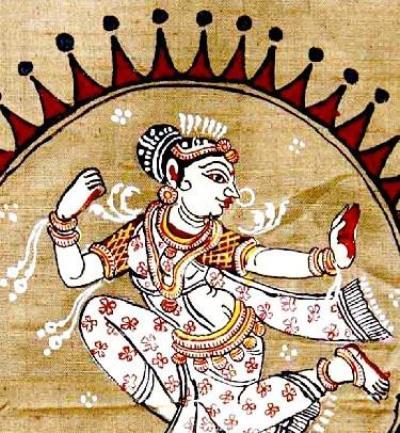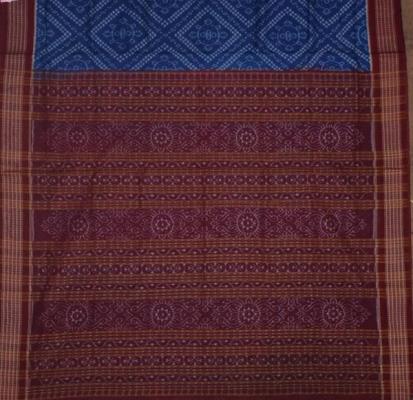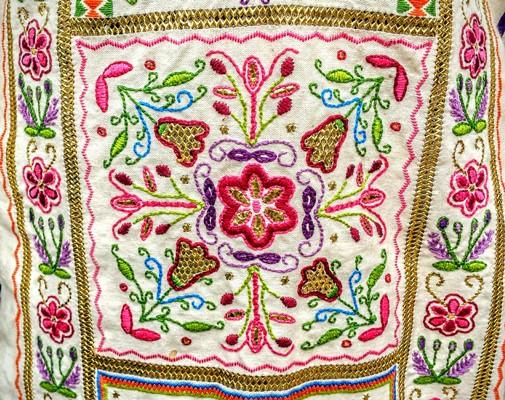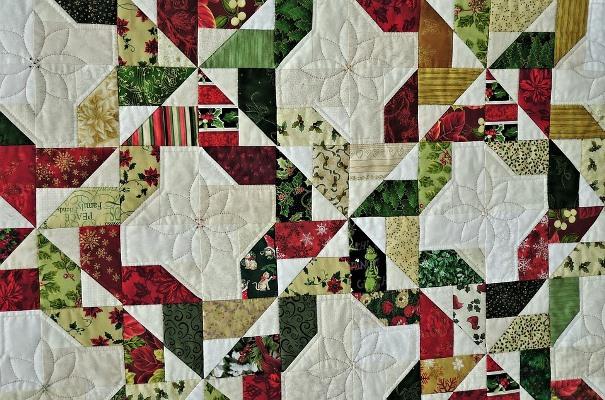
Pattachitra
Pattachitra style of painting is one of the oldest and most popular art forms of Odisha. The tradition is more than thousand years old. The name Pattachitra has evolved from the Sanskrit words patta, meaning canvas, and chitra, meaning picture. Pattachitra is thus a painting done on canvas, and is manifested by rich colorful application, creative motifs and designs, mostly mythological in depiction.

Tribal
Tribal paintings of Odisha is known as "Saura Tribal painting". Saura paintings are an integral part of the religious ceremonies of the Saura tribals and are found in the southern Odisha. These paintings, are visually similar to Warli paintings.

Bandha
Traditionally, Odisha craftsmen created Bandhas with images of flora or fauna or with geometrical patterns. Bandha fabric is created using a tie-dye technique. The yarns are tied according to the desired patterns to prevent absorption of dyes, and then dyed. The yarns or set of yarns so produced is called 'Bandha'. Thus Bandha can be defined as "A length of systematically arranged yarn, dyed according to a preconceived design in such a manner so as to enable a weaver to portray the design when the yarn is converted to a fabric through the process of weaving".

Ikat
Odisha Ikat is a kind of ikat, a resist dyeing technique, originating from Indian state of Odisha. Also known as "Bandha of Odisha". Bandha can be defined as "A length of systematically arranged yarn, dyed according to a preconceived design in such a manner so as to enable a weaver to portray the design when the yarn is converted to a fabric through the process of weaving". Another notable feature in this Ikat is that it depicts the same colourful design motif on both its front and back sides. No additional yarn is required to produce this effect.

Double Ikat
Double ikat is created by resist-dyeing both the warp and weft prior to weaving. The term double ikat is used only when the warp and weft patterning overlap to form common, identical motifs. This form of weaving requires the most skill for precise patterns to be woven and is considered the premiere form of ikat. The amount of labour and skill required also make it the most expensive.

Embroidery
Embroidery is the craft of decorating fabric or other materials using a needle to apply thread or yarn. Some of the basic techniques or stitches of the earliest embroidery are chain stitch, buttonhole or blanket stitch, running stitch, satin stitch, cross stitch. Those stitches remain the fundamental techniques of hand embroidery today.

Motifs
It's a recurring element or fragment that, when joined together, creates a larger work. It creates recognizable patterns like in folklore and folk-art traditions.

Patchwork
The village of Pipili(state Odisha, Country India)is well known for its applique or patchwork. The Pipli Applique work owes its origin to Lord Jagannath culture during 12th century. Earlier applique umbrellas and canopies were prepared by gajapatis for the annual Jagannath's Ratha Jatra. In applique technique, fabric shape is sewn over a base layer.

Woven
Woven fabric is any textile formed by weaving. Woven fabrics are often created on a loom, and made of many threads woven on a warp and a weft. Technically, a woven fabric is any fabric made by interlacing two or more threads at right angles to one another.

